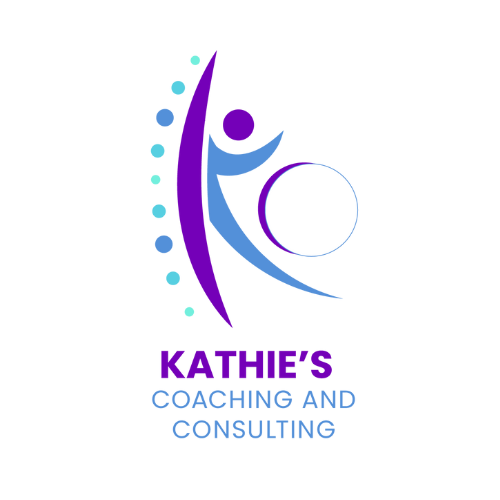Building Emotional Awareness in Teams
Techniques for Leaders
The ability to understand and manage emotions—both your own and those of others—has become a cornerstone of effective leadership and team cohesion.
Emotional intelligence, often referred to as emotional awareness, is a vital skill for any successful team. For leaders, the challenge lies not only in developing emotional intelligence (EI) within themselves but also in fostering it among their teams.
In this post, we’ll explore the importance of emotional intelligence in the workplace, methods for leaders to cultivate emotional awareness within teams, and practical techniques to create a culture that values emotional well-being.
Why Emotional Intelligence Matters in the Workplace
Emotional intelligence is defined as the ability to recognize, understand, manage, and influence emotions.
In the workplace, high emotional intelligence allows individuals to navigate social complexities, manage relationships more effectively, and make more informed decisions. It’s an essential trait for leaders, particularly those responsible for managing diverse teams.
Emotional Intelligence Accounts for 90% of Top Performers' Success
Research from TalentSmart shows that 90% of top performers in the workplace have high emotional intelligence, while only 20% of bottom performers possess similar levels. This shows the significant impact of emotional intelligence on overall performance and success.
A team, much like a ship, needs direction and coordination to move forward. Emotional awareness is the compass that helps guide the ship toward its destination, whether it’s achieving project goals or maintaining a healthy work environment.
For leaders, fostering emotional intelligence in teams is crucial for several reasons:
Improved Team Communication: Teams with higher emotional intelligence communicate more effectively, resulting in fewer misunderstandings and conflicts.
Enhanced Problem-Solving: Teams that are emotionally aware tend to approach challenges more collaboratively and creatively, improving overall problem-solving capabilities.
Increased Engagement and Job Satisfaction: When employees feel understood and supported emotionally, they are more engaged in their work and loyal to the organization.
Reduced Stress and Burnout: Emotional intelligence can help employees manage stress more effectively, leading to lower rates of burnout and higher resilience.
Techniques for HR Leaders to Develop Emotional Awareness in Teams
As an HR leader, your role in fostering emotional intelligence starts with setting the example. Here are several methods to develop emotional awareness within your team, each designed to strengthen connections, improve understanding, and boost emotional well-being.
1. Lead by Example: Demonstrate Emotional Intelligence
As a leader, your team will often mirror your behaviors, especially in how you respond to emotional situations. Cultivate your own emotional intelligence by practicing self-awareness and empathy.
Practice Active Listening: When communicating with team members, give them your full attention and acknowledge their emotions. Active listening means focusing on what’s being said without formulating your response while they speak. Reflect on their words and offer thoughtful responses.
Respond, Don’t React: In emotionally charged situations, take a moment to consider your response rather than reacting impulsively. This demonstrates emotional control and shows your team that you value thoughtful communication.
Model Empathy: Show understanding and compassion when team members are going through personal or professional challenges. Be the person they can turn to for support, and you’ll encourage the same empathy within the team.
2. Create Safe Spaces for Open Dialogue
An emotionally intelligent workplace is one where employees feel safe expressing their thoughts and feelings without fear of judgment or repercussions. This type of environment promotes emotional growth and enhances team collaboration.
Encourage Open Communication: Make it clear that employees are welcome to express their feelings and concerns. This could be achieved through regular one-on-one meetings, team discussions, or anonymous feedback channels.
Host Emotional Check-Ins: Integrate emotional check-ins into team meetings or individual sessions. For instance, start each meeting with a “pulse check” where team members briefly share how they’re feeling. This helps normalize discussions about emotions and encourages team members to be more in touch with their own emotional states.
Develop Emotional Vocabulary: Provide your team with the language they need to express their emotions more accurately. Emotional vocabulary tools, like lists of feeling words, can help team members articulate their experiences beyond simply saying “I’m fine” or “I’m stressed.”
3. Invest in Emotional Intelligence Training
Formal training programs can provide your team with the skills they need to build emotional intelligence. This includes workshops, webinars, or one-on-one coaching sessions focused on emotional awareness and interpersonal skills.
Offer Workshops on Emotional Intelligence: These could include topics like self-awareness, self-regulation, empathy, and social skills. Interactive sessions with role-playing or group activities can help employees practice these skills in real time.
Include Emotional Intelligence in Leadership Development: Aspiring leaders within your organization should receive dedicated training on emotional intelligence. As they advance, their ability to manage emotions—both their own and those of their team—will directly impact their leadership effectiveness.
Provide Access to Emotional Intelligence Assessments: Tools like the EQ-i 2.0 or the Emotional Competence Inventory (ECI) can help team members assess their emotional intelligence and identify areas for growth. These assessments provide a structured way to measure and improve emotional awareness.
The 12 Elements of Emotional Competence: These are emotional self-awareness, emotional self-control, adaptability, achievement orientation, positive outlook, empathy, organizational awareness, influence, coach and mentor, conflict management, teamwork and inspirational leadership
4. Encourage Mindfulness and Emotional Self-Management
Mindfulness is a powerful tool for increasing self-awareness and emotional regulation. Encouraging your team to practice mindfulness can improve their ability to manage stress and approach challenges calmly and thoughtfully.
Promote Mindfulness Practices: Provide opportunities for mindfulness activities in the workplace, such as meditation sessions, breathing exercises, or moments of silence before meetings. Encourage team members to take short breaks throughout the day to center themselves and manage emotions.
Teach Stress-Management Techniques: Offer workshops or resources on stress management and emotional regulation. Techniques like deep breathing, journaling, or taking regular breaks can help employees manage their emotions more effectively throughout the workday.
5. Celebrate Emotional Awareness Wins
A key aspect of emotional intelligence is recognizing when growth has occurred. As an HR leader, celebrate when your team or individual members make progress in developing emotional awareness.
Acknowledge Emotional Growth: Publicly recognize moments when team members demonstrate high emotional intelligence, such as resolving a conflict calmly, showing empathy in a challenging situation, or leading with emotional awareness.
Reward Emotional Intelligence: Consider integrating emotional intelligence into your performance evaluations. When team members are rewarded for demonstrating strong emotional awareness, it reinforces the importance of these skills in the workplace.
6. Foster Team-Building Activities that Focus on Emotional Awareness
Team-building exercises are a great way to develop emotional intelligence in a group setting. Focus on activities that require team members to communicate, empathize, and work collaboratively while managing emotions.
Use Emotional Awareness Games: Engage your team with games and activities that challenge them to identify and express emotions. For example, “emotion charades” or group storytelling where emotions must be highlighted can be fun ways to improve emotional vocabulary and recognition.
Host Group Reflections: After completing a major project or overcoming a challenge, gather the team for a reflection session. Encourage them to share their emotional experiences, how they navigated challenges, and what they learned about themselves and their teammates.
Building a Culture of Emotional Intelligence
Ultimately, the goal of developing emotional awareness in teams is to create a workplace culture that values emotional well-being. As HR leaders, you play a pivotal role in setting the tone for how emotions are managed within the organization. By leading with emotional intelligence, fostering open communication, and providing the tools and training necessary for emotional growth, you’ll create an environment where employees feel supported, engaged, and motivated.
The benefits of building emotional awareness in teams extend beyond individual performance—they contribute to the overall success of your organization. When employees feel understood and valued, they’re more likely to stay engaged, innovate, and collaborate effectively. And as a leader, this emotional intelligence will help you navigate the complexities of the modern workplace with grace and empathy.
About the Author: Kathie Owen is a seasoned Corporate Wellness Professional with over a decade of experience driving wellness initiatives within a rapidly growing pharmaceutical company, expanding from 75 to over 200 team members under her leadership since 2012.
With a rich background as a certified fitness trainer and life coach since 2002, Kathie combines her practical expertise in health and wellness with a deep understanding of psychological principles, thanks to her degree in Psychology.
Her holistic approach to corporate wellness not only fosters a culture of health and engagement among employees but also supports organizations in achieving their most ambitious wellness goals.
Kathie's Coaching and Consulting reflects her passion for empowering HR directors and aspiring corporate wellness leaders to create thriving workplace environments through strategic wellness programs and employee engagement.














A leadership coach shares her personal journey of being fired for speaking up against toxic workplace culture, drawing parallels with Ted Lasso's themes of authentic leadership and courage. Her story illustrates how challenging systemic dysfunction often comes at a cost—but leads to greater freedom. #WorkplaceCulture #Leadership #TedLasso #ToxicWorkplace #CareerGrowth